Tamayouz International Award - 2016 Shortlist
Mujib Interpretation Routes
Shatha Alhaj - German Jordanian University - Jordan
Supervised by: Leen Fakhoury
Introduction
Due to the variety of adventure sports the nature of Wadi al-Mujib offers, the number of visitors reached 20,000 by 2012, which is the largest compared to other reserves in Jordan, which was a reason for some architectural interventions in the area related to eco-tourism.
The presence of Mujib’s permanent-flow-water in a dry country like Jordan led the Ministry of Water to creating a diversionary dam at the Mujib Siq entrance, where water is harvested and transformed to treatment plants and then pumped to the north.
When Mujib valleys unique natural phenomena is to be interpreted in an architectural project, not only its natural value will be the topic of interpretation, but also the human impact and the manmade structures in the area, are important parts of the process. Therefore, this project aims to exhibit both landscape and infrastructure, by folding itself in the landscape delicately with a simple and elegant construction that is respectful to the context and environment.
Mujib Interpretation Routes
Shatha Alhaj - German Jordanian University - Jordan
Supervised by: Leen Fakhoury
Introduction
Due to the variety of adventure sports the nature of Wadi al-Mujib offers, the number of visitors reached 20,000 by 2012, which is the largest compared to other reserves in Jordan, which was a reason for some architectural interventions in the area related to eco-tourism.
The presence of Mujib’s permanent-flow-water in a dry country like Jordan led the Ministry of Water to creating a diversionary dam at the Mujib Siq entrance, where water is harvested and transformed to treatment plants and then pumped to the north.
When Mujib valleys unique natural phenomena is to be interpreted in an architectural project, not only its natural value will be the topic of interpretation, but also the human impact and the manmade structures in the area, are important parts of the process. Therefore, this project aims to exhibit both landscape and infrastructure, by folding itself in the landscape delicately with a simple and elegant construction that is respectful to the context and environment.
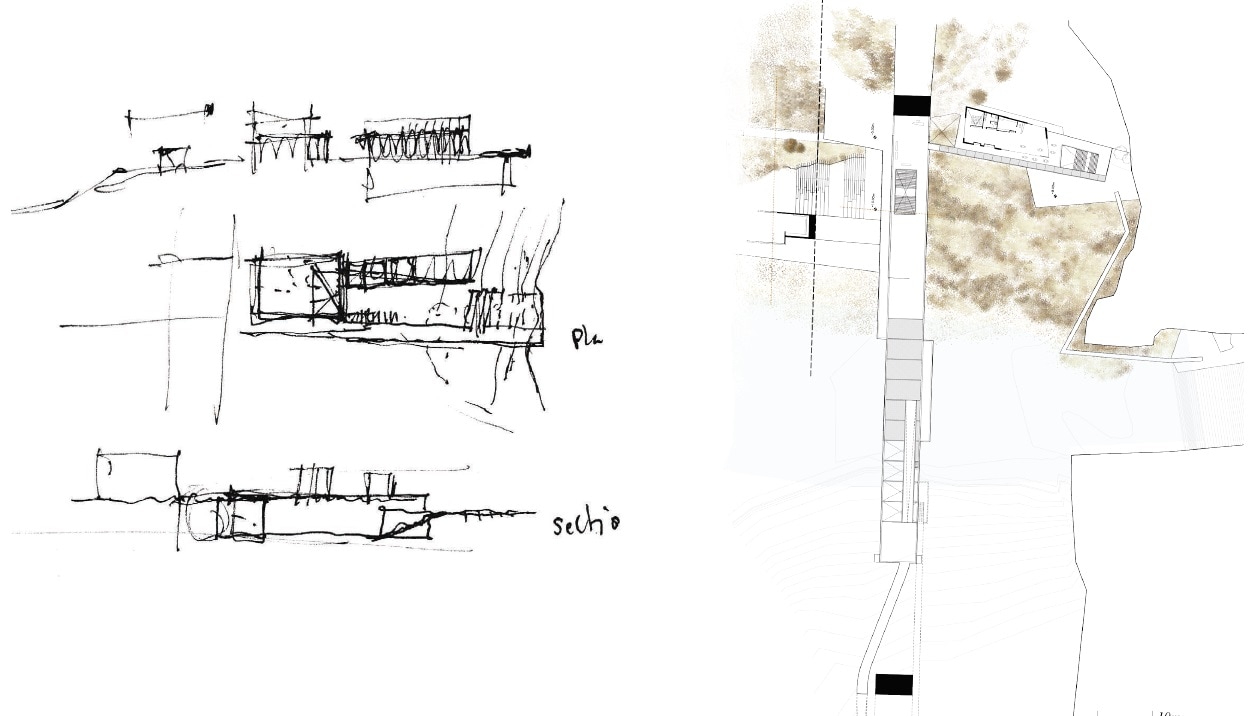
Site selection criteria
The western buffer zone of Mujib reserve was selected as the area of study. Human access to the reserve, the end-flow of water, water harvesting, treatment and pumping, eco-tourism, all happen in this part of the reserve.
The western buffer zone of Mujib reserve was selected as the area of study. Human access to the reserve, the end-flow of water, water harvesting, treatment and pumping, eco-tourism, all happen in this part of the reserve.
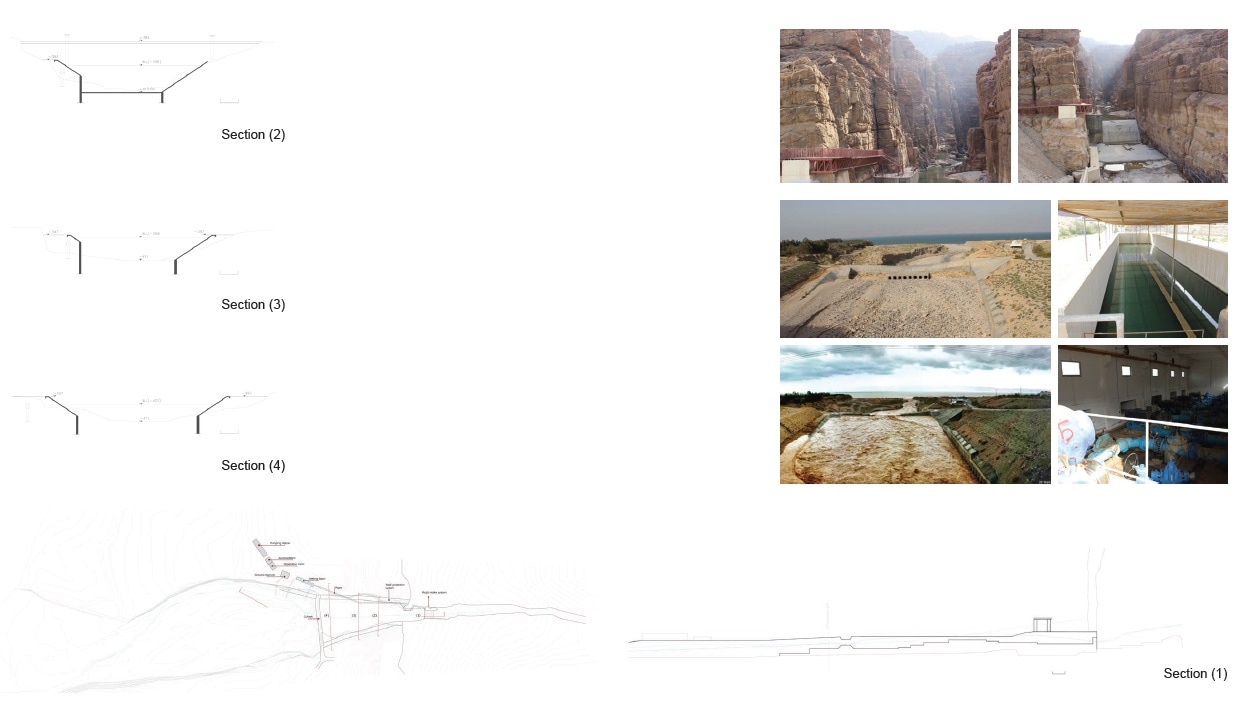
Current movement patterns
The construction of the dead-sea highway on the edge of the western boundary of Mujib reserve, allowed people to reach the area by driving between north and south, and entering the reserve starting an unofficial eco-tourism in the wadi’s in the late 90’s, therefore the RSCN decided to organize these activities and confine them in certain canyoning and hiking trails. A visitors’ center was built and recently renovated and expanded adjacent to the entrance of Siq al Mujib where all canyoning trails start, while the end point of most of the trails is 1.5 km far from the starting point -to the south.
The construction of the dead-sea highway on the edge of the western boundary of Mujib reserve, allowed people to reach the area by driving between north and south, and entering the reserve starting an unofficial eco-tourism in the wadi’s in the late 90’s, therefore the RSCN decided to organize these activities and confine them in certain canyoning and hiking trails. A visitors’ center was built and recently renovated and expanded adjacent to the entrance of Siq al Mujib where all canyoning trails start, while the end point of most of the trails is 1.5 km far from the starting point -to the south.
On their way back to the starting point, eco-tourists have to walk on the side of the highway to reach the visitor’s center, and if they are staying for an overnight in the Mujib chalets which were built along the coast in 2008, they should cross the highway and walk the sloped terrain down, interrupted by the wired pumping station.
Focus area
The existing interventions in the area had rational reasons to exist each in where it is currently placed, but not necessarily in the present way of implementation. Dependently, the project’s area and quality was determined.
The located infra-structural and architectural interventions generated from certain human-needs linked with the area, either related to transportation (dead-sea highway and bridge), water (Mujib levee and water pumping system), or eco-tourism (visitors’ center and chalets), however the network connecting these interventions was not planned in a comprehensive manner, which made it hard and unsafe to move from one point to another. The approach in this project relies on the traces of these existing structures without expanding the footprint on site, while preserving and encouraging human movement in it.
The existing interventions in the area had rational reasons to exist each in where it is currently placed, but not necessarily in the present way of implementation. Dependently, the project’s area and quality was determined.
The located infra-structural and architectural interventions generated from certain human-needs linked with the area, either related to transportation (dead-sea highway and bridge), water (Mujib levee and water pumping system), or eco-tourism (visitors’ center and chalets), however the network connecting these interventions was not planned in a comprehensive manner, which made it hard and unsafe to move from one point to another. The approach in this project relies on the traces of these existing structures without expanding the footprint on site, while preserving and encouraging human movement in it.

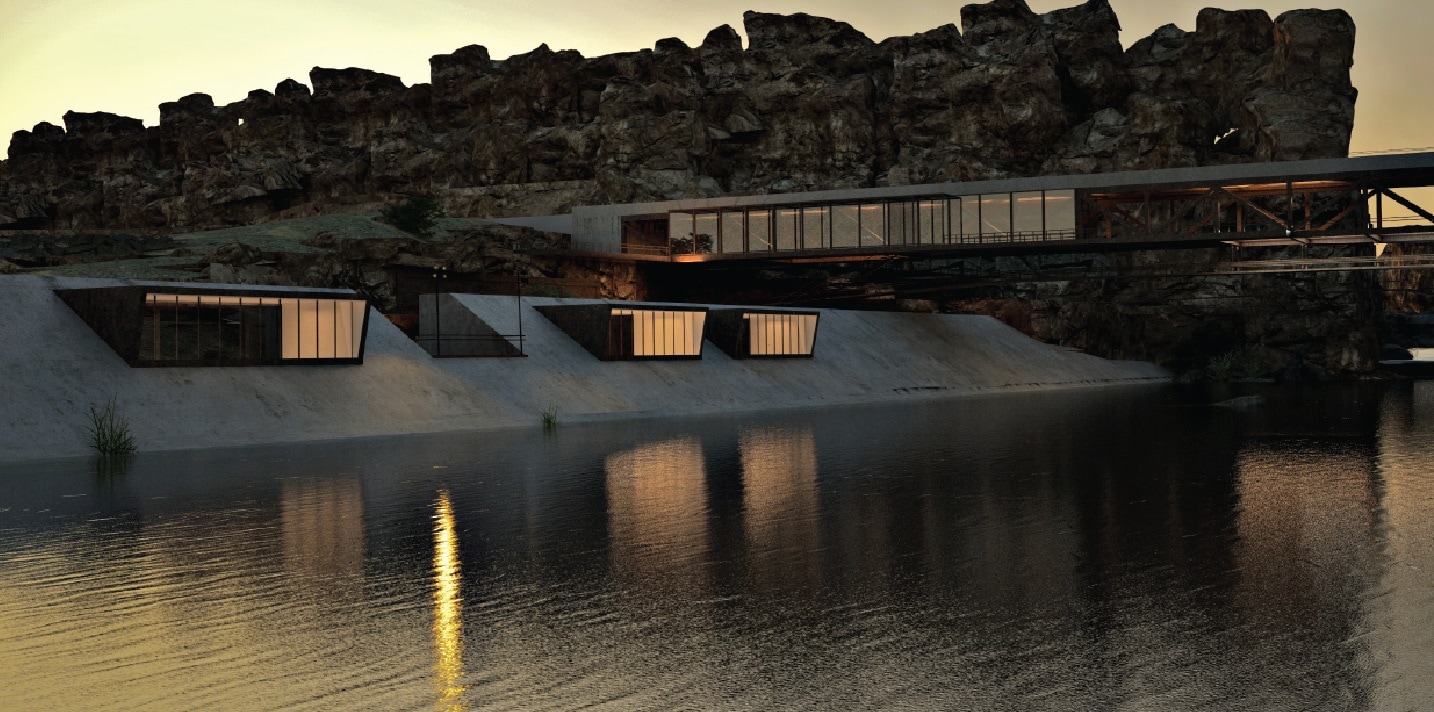
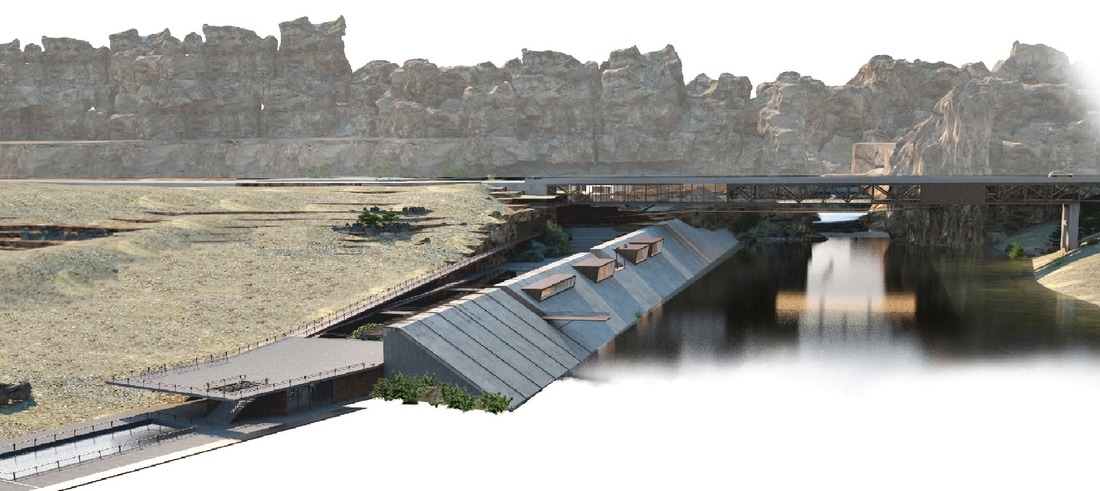
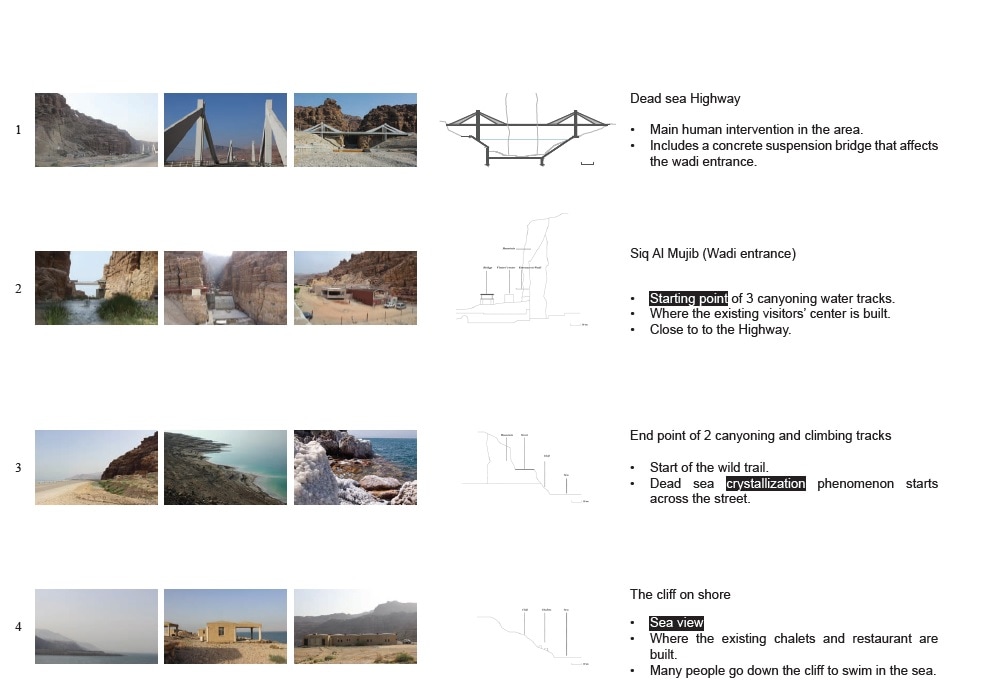
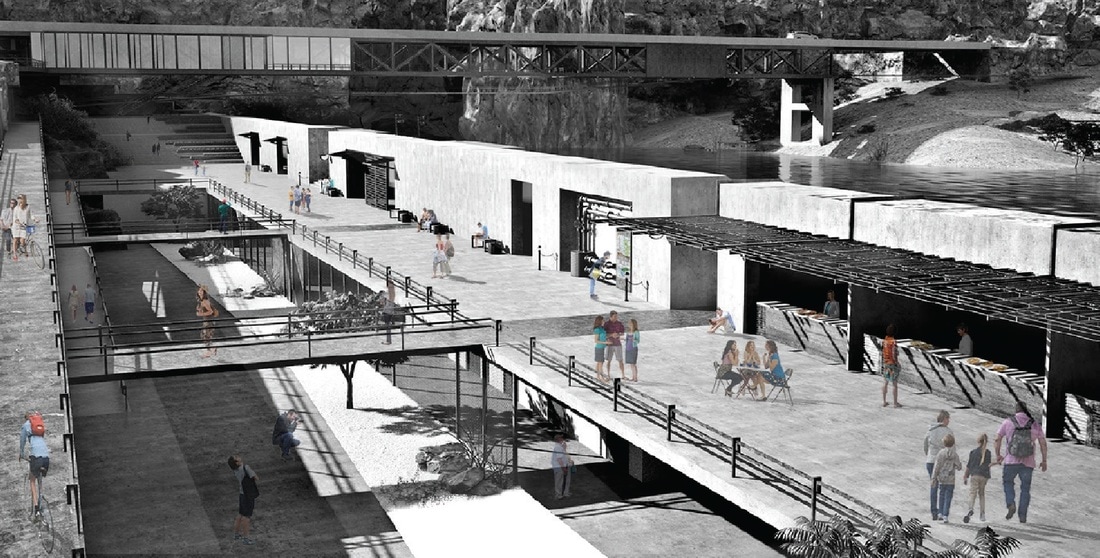


 RSS Feed
RSS Feed